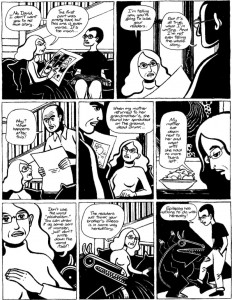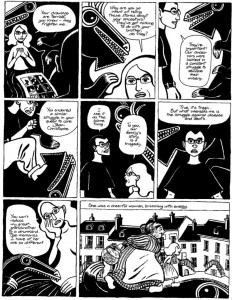Summary and Response
Stephanie Kerschbaum’s Toward a New Rhetoric of Difference (2014) represents a turning point in disability studies research for writing studies. While the monograph–published by CCCC and the NCTE and recently chosen to receive the 2015 CCCC Advancement of Knowledge Award–clearly claims disability studies its topical home, it is not primarily a study of either disability as a category or disabled students as a population. Instead, Kerschbaum applies a disability studies mentality to the study of difference across identity categories, especially racial/ethnic categories associated in higher education institutional discourse about diversity.
Kerschbaum analyzes a range of institutional documents from a large midwestern university (MU) to show how the university imagines diversity as a purely quantifiable demographic feature, measurable by the number of racially/ethnically marked bodied admitted and retained on campus. Within this model, diversity is valued for the marketability it provides both the university and the white students who learn about difference by virtue of their campus encounters with diverse others. She contrasts this static, determinist view of diversity with a recognition that difference is neither static nor inherent in bodies. By analyzing transcripts of students interacting in the writing classroom, Kerschbaum identifies how interlocutors experience difference as a rhetorical phenomenon, marking and negotiating interpersonal differences in worldview and identity in flexible, moment-by-moment interactions. Rather than fixating on rigid, determinist ideas about difference and diversity, Kerschbaum models a de-essentializing process of “flexible listening” that invites all classroom participants (instructor and student alike) to reflect on the effects of interpersonal difference for rhetors, learners, and instructors.
Those not already familiar with disability studies might miss how much Kerschbaum’s approach draws from the field’s central tenets, especially the relational model of disability. The most obvious moments where DS scholarship and perspectives enter the study appear in her second chapter, “Marking Difference: The Emergence of Difference as an Interactional Phenomenon,” where she contrasts two understandings of embodied difference that relate to disability. First, she summarizes work by Ann Juracic, who published two articles about presumed-autistic students in her writing classroom. Juracic drew criticism from DS scholars for “diagnosing” the student in her study with Asperger’s Syndrome and seeming to base her perspective on autism in the classroom purely on the medical-pathology model. Kerschbaum contrasts this approach to embodied difference with DS perspectives, which deny biological determinist definitions of difference (i.e. you are different as a result of your autism); rather, DS scholarship shows that that difference emerges in interaction among diverse individuals, and is thus and experience shared by everyone involved in a particular rhetorical act. This insight emerges in part from DS perspectives on communication across disability lines: whereas mainstream, ableist perspectives might hold that Deaf or hard-of-hearing people bear the burden of getting by in “normal,” auditory communication, DS asserts that the hearing person shares an equal responsibility to participate in accessible communication. This does not mean that hearing people should become experts in Deaf communication (as Juracic advocates writing teachers becoming experts in Autistic communication), but rather that they approach communication as a mutually-negotiated act, where they adapt to the needs of all parties on a case-by-case basis.
Kerschbaum, Stephanie L. Toward a New Rhetoric of Difference. Urbana, IL: Conference on College Composition and Communication/National Council of Teachers of English, 2014.
Reflections for my own dissertation work: diversity discourse vs disability discourse?
Like other recent work on disability in higher education–I’m thinking of Margaret Price’s work here–Kerschbaum uses a critical discourse analysis (CDA) methodology throughout her study. It is in this respect that her study offers a useful model for my own project on disability services and institutionalized discourse about “disability” in the CUNY system. Kershbaum’s first chapter shows a detailed analysis of a set of institutional documents from MU, including public reports and diversity initiatives penned by the administration. She uses CDA to unpack the ideology embedded in these documents, especially focusing on what we learn by the use of pronouns us, we, our. This approach inspires me to examine the rhetoric about disability inclusion put out by the CUNY administration–I may find it trickier to come up with prominent public texts to analyze. A few possibilities: each of the issues of CUNY’s internally published guide for faculty, Reasonable Accommodations, includes forewords by university chancellors and other administrators, often summarizing college attitudes about disability access or describing goals for the future. These might prove fruitful. Likewise, in the past, I have also examined the language used to address students and faculty on disability services web pages from across the system. I am still in the process of gathering artifacts that document institutional discourse about disability access: Kerschbaum’s work provides a useful model and a possible point of comparison for this work.
I am also interested in reflecting further on Kerschbaum’s analysis of the way college diversity rhetoric reflects values of neoliberal market awareness, framing the accumulation of difference as a valuable asset for the university. It strikes me that disability is rarely described in this way, but instead (this is a hunch that I need evidence for) described as a moral obligation for the system or as a disruption imposed from the law, rather than from the market. This question about marketability leads me to ponder two loose ends that have emerged recently from my interviews with disability services directors from across the CUNY system.
Strand one–Rebranding disability as diversity. A few of the disability service directors I interviewed discussed the desire to re-brand disability inclusion as a diversity issue. While CUNY markets its racial/ethnic diversity very strongly, they didn’t see disability being included in the diversity conversation. They discussed how diversity potentially provided a more positive, stigma-free connotation to the work, which could draw more students to seek out services. I wonder if one way to track this re-branding of disability might be to track the shift from calling them “disability services” offices toward more neutral-sounding names like “access-ability” offices.
Strand two–marketing disability in the workforce. Recently, I learned about the CUNY LEEDS program, which provides career counseling and job mentorship for disabled students, especially aimed at getting them good employment after they graduate. This program seems to be unusual on the national landscape of disability work in higher ed. Speaking with one of the program’s director, I learned that in March 2014, amendments to section 503 of the Rehabilitation Act of 1973 came into effect that established a benchmark for federal contractors that 7% of their workforce be disabled people (http://www.dol.gov/ofccp/regs/compliance/section503.htm). The program director suggested that this change in the law, essentially, provided a new opportunity for marketing disabled students following graduation, and potentially provided new leverage with the institution for justifying the work of the program.
These leads might not take me anywhere particular, but they both shook loose as I thought through Kerschbaum’s excellent study and how it might influence my own dissertation project in progress.





